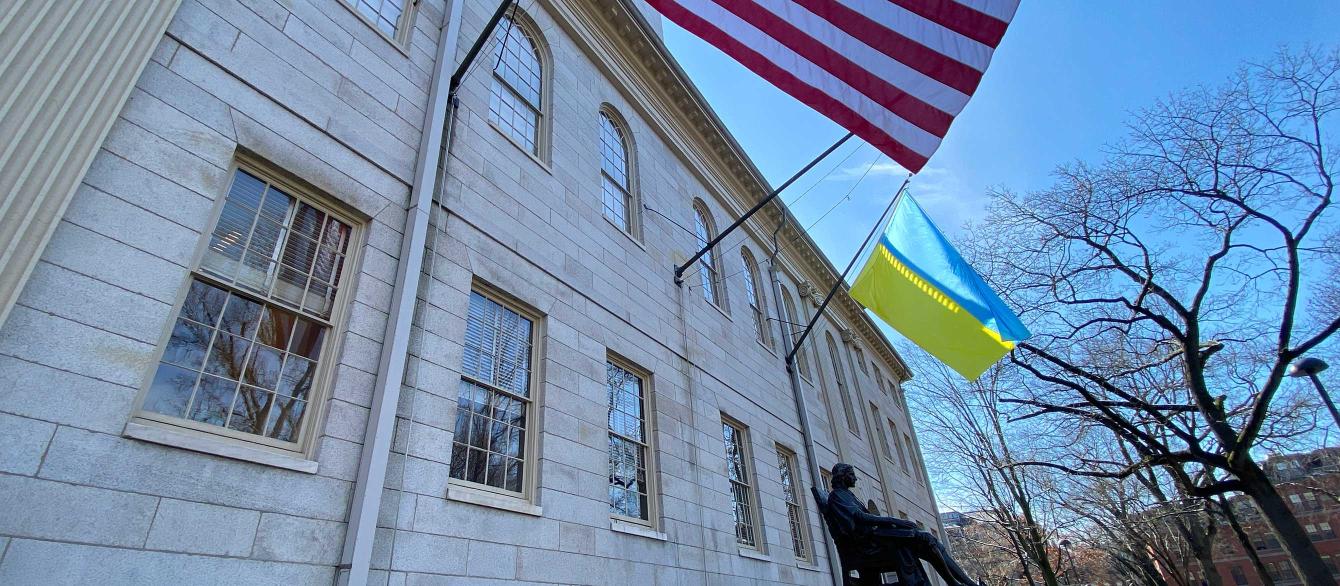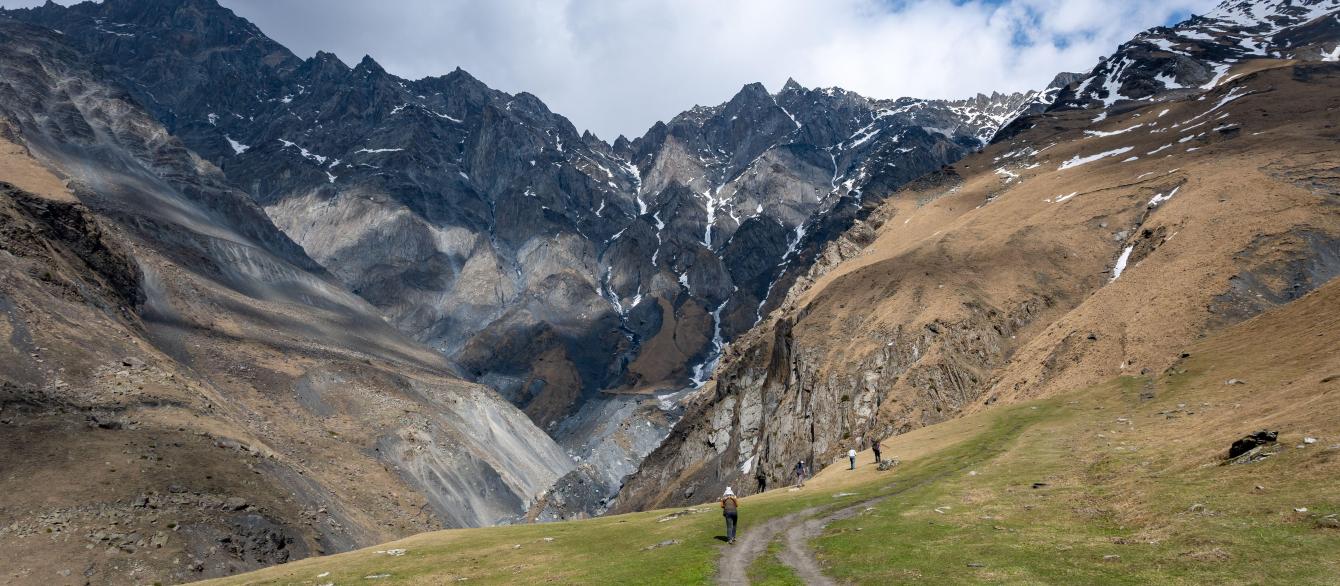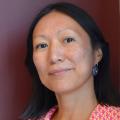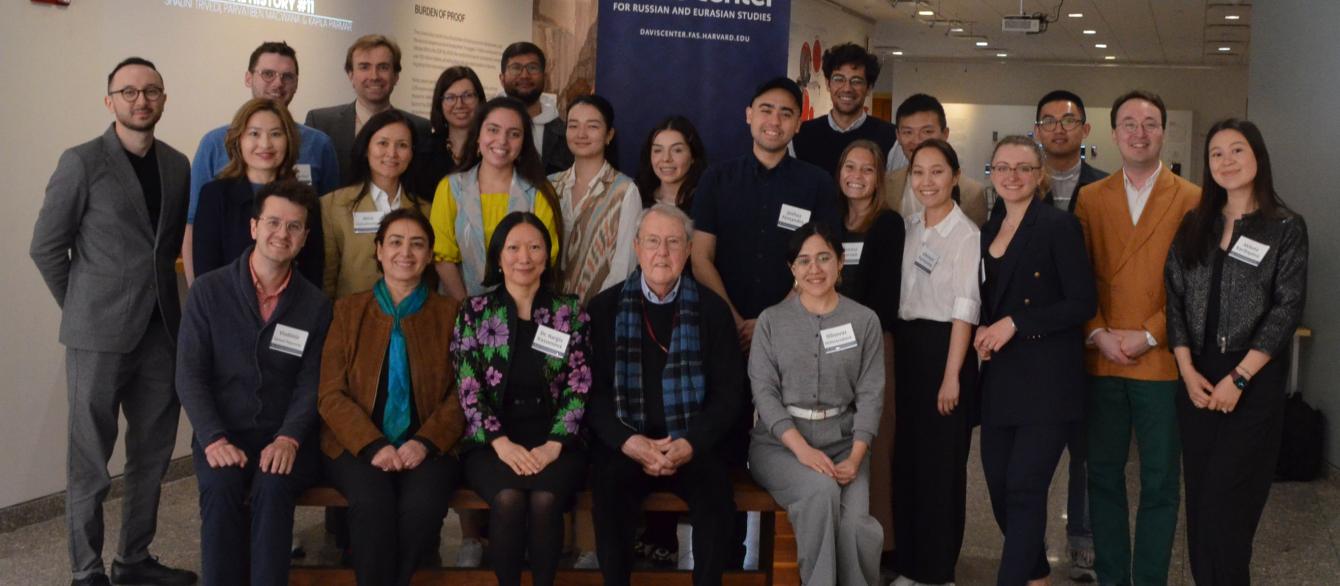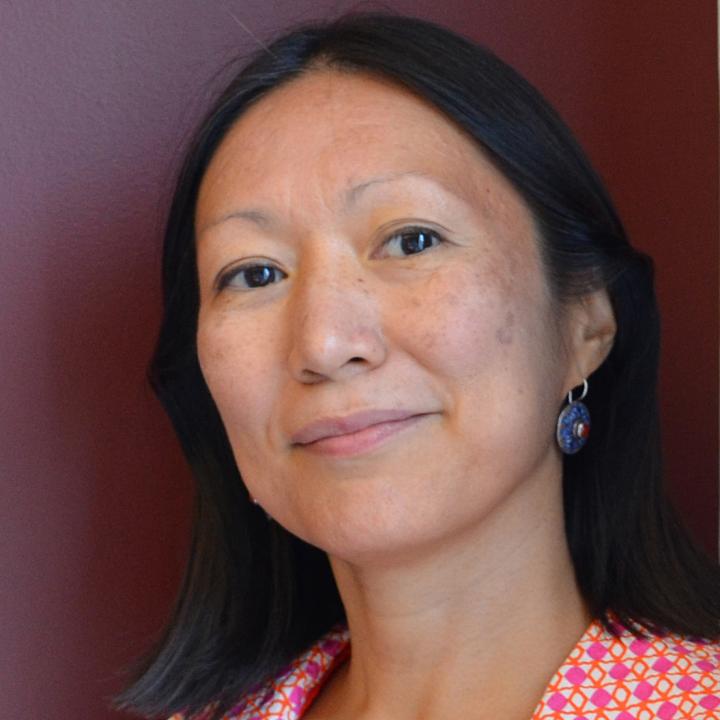At universities, summer often invites reflections on the previous year’s work. For the Davis Center’s Program on Central Asia, the most meaningful accomplishment — not just in the past year but since the program’s establishment in 2018 — has been the gradual, persistent building of a community of academics and practitioners focused on the region. The program has become a magnet for young scholars thrilled to find themselves among fellow travelers who know, study, and care deeply about Central Asia — in a community where they don't need to explain what the region is or why it should be studied and can delve right into the deeper layers of each other’s work.
Perhaps no activity reflects the vibrancy of this community better than the annual Davis Center Graduate Student Conference on Central Asia. The first gathering, in 2023, was a pilot project that exceeded expectations, not only in terms of interest, but in the intellectual cross-pollination and relationships that grew out of it. In 2024, the number of applications more than doubled, exceeding 100. Organizers selected 21 young scholars working on Central Asia to share their work over three days in April, alongside other talks and a film screening. Three themes ran through the event: (1) connectivity, (2) social contracts, and (3) hybrid identities. All presentations, by design, were works in progress, adding to the participatory, workshopping environment.
For those who feel themselves a part of this community but weren’t able to attend the 2024 conference, we’ve tried below to give a small taste of the talks given. We hope this will further help scholars, students, analysts, and others who are working on Central Asia find one another and benefit from shared knowledge and collaboration. (For grad students’ affiliations, click the preceding link.)
Opening Day
- Retired U.S. Ambassador Thomas Simons stressed the importance of scholarly research on the history of Central Asia — both to better understand today’s developments there and to build a stronger foundation for U.S. policymaking. (His recollections of the region in the early 1990s are included in our “American Diplomats in Central Asia” series.)
- Steven Mann — formerly a U.S. Caspian energy envoy and an ambassador to Turkmenistan — gave a keynote titled “Central Asia: Old Triumphs, Tough Truths” on the past and present of Caspian energy connectivity. In the 1990s, Azerbaijan and Kazakhstan quickly opened up to foreign investment in the energy sector and worked on developing new oil and gas export routes. Turkmenistan, on the other hand, kept angling for higher bidders, Mann said. As a result, many Western companies left the country, while China’s CNPC and some others remained. Today, Mann pointed out, Central Asia is no longer the focus of global oil and gas investment; new opportunities lie in the area of critical minerals. Regional energy cooperation is needed to make Central Asia more attractive for investments, but the economics of it is a black box, he said, adding that aligning the interests of national companies and private companies can be a big challenge.
In and Out of Central Asia: Rise of Connectivity
- In his keynote presentation Dr. Vladimir Hamed-Troyansky gave a tour-de-force overview of migration from late czarist and early Soviet Central Asia triggered by dramatic developments in the region, including the 1916 uprising, civil war in 1917-23, Soviet reforms in the 1920s, and the Kazakh famine in 1930-1933. He paid particular attention to the loss of Muslim sovereignties as the underlying cause, and shed light on the scale and impact of settler violence.
- Graduate student presenters delved into the region’s evolving role as a critical bridge between various global quarters, especially in the context of the Russia-Ukraine war.
- Aleksei Rumiantsev talked about changes in labor migration trends from Uzbekistan in the wake of the war. In 2023 Russia’s Ministry of Internal Affairs stopped publishing migration statistics, making it more difficult to assess the scale of migration flows and understand the trends. Rumiantsev’s research makes creative use of other sources. He argued that Russia will remain a major destination for Uzbek labor migrants despite the serious challenges of working in Russia and the growth of migration to third countries.
- Yipeng Zhou shed light on the expansion of the Russian-led mining industry into northern Central Asia in the second half of the 18th century, when, it is said, the empire was ruled by a philosophy of “enlightened absolutism” under Catherine II. Through interactions with nature and peoples on the steppe and in the mountains, he argued, Russian industrialists found that neither the natural world nor the diverse populations could be “rationalized” and universalized by “enlightened” industrial enthusiasm.
- Yida Jiao discussed the “clusterization” of Uzbekistan’s agricultural sector since 2017 and how Chinese private enterprises perceive and navigate it. While the so-called cluster reform has introduced private and foreign capital into the sector, it has not integrated adequate market mechanisms. This, Jiao noted, leads to a scenario where a command economy operates under the guise of contract farming. Insecure land tenure discourages farmers from investing in land and technology.
- Zuhra Halimova gave a special presentation on digitization in Central Asia and its promises and pitfalls.
- The region has a set of “natural disadvantages” that act as barriers to internet diffusion — being landlocked and far away from submarine cables, having difficult terrain and vast hinterlands with low population density.
- According to an estimate by the Geneva-based International Telecommunication Union, it will take investment of $6 billion to connect the remaining half of Central Asia’s population to the internet. Achieving this would require an unprecedented degree of cooperation, coordination, and political will.
- Regulatory frameworks are underdeveloped. As technology develops, regulators in Central Asian countries struggle with an ever-growing array of challenges including digital identity, data protection, blockchain, and AI.
- Central Asian countries can greatly benefit from stronger involvement of the EU and U.S. in the processes of digital transformation in the region, Halimova believes. The EU Digital Single Market and its human-centric model of digital transformation can become a model for Central Asia.
- She argued that Central Asia could become a digital bridge between East and West, North and South, if the countries of the region are able to build a balanced regional digital ecosystem.
State and Society: A New Social Contract?
- Graduate student presenters examined the political dynamics, societal expectations, and emergent social contracts in Central Asia’s evolving authoritarian regimes.
- Nazerke Mukhlissova discussed the emergence of Central Asian nationalisms in 1916-1936 and focused on the circumstances and reasons for Kazakhstan’s ability to acquire “union republic” status (while Tatarstan could not). She argued that being a borderland had mattered.
- Nicholas Seay compared the development of integrated pest management in the Soviet Union and the United States in the postwar period. He argued that Soviet models of environmentalism, much like in the U.S. and other places across the globe, emerged as responses to crises. What makes the Soviet case different is that recognition of crises and responses were largely confined to official scientific institutions, often lacking widespread grassroots organizing.
- Khasan Redjaboev presented his study of forced labor and progressive public goods (PPG) in Soviet Central Asia, arguing that Communist ideology alone cannot explain the 20th-century push for female emancipation there. He argues that the state made significant investments into rural communities and the agricultural periphery — e.g., funding goods and services such as free education and medical care — in order to enable forced labor, especially among women, who were the largest untapped labor supply for the state at the start of the period under consideration. This provision of PPG in exchange for labor, which the author terms "state patriarchy," lasted from 1923 until at least 1991, and even longer in some territories, outlasting the Soviet regime that created them.
- Matteo Bonini compared ways in which queer activists in Kazakhstan and Kyrgyzstan invoke constitutional provisions in their engagement with the state. He finds that in Kazakhstan their approach shows more trust in institutions, while in Kyrgyzstan they tend to target influential individuals.
- Akbota Karibayeva focused on managed power successions in the post-Soviet space, drawing on cases from Kazakhstan, Kyrgyzstan, Armenia, and Russia. She proposed a new typology of power successions in post-Soviet authoritarian regimes and zoomed in on four pathway cases of managed successions with divergent outcomes for the outgoing leaders.
- Malika Toqmadi shared preliminary findings based on her interviews with recipients of the Bolashak International Scholarship, sponsored by the government of Kazakhstan since 1993. The questions that interest her most are: Do Western-educated officials bring change in authoritarian settings, or do they adapt to the existing institutions and norms? How does such change happen?
- Emma Larson explored economic factors underlying the rise and normalization of polygyny in post-Soviet Central Asia, using the case of Kyrgyzstan. Poverty, poor job prospects, gender wage disparity, and male outmigration drive women to choose polygynous marriages in an attempt to secure financial stability and monetary support in an unfavorable economic environment.
- Dilnovoz Abdurazzakova examined the impact of a childcare-expansion policy implemented in Uzbekistan from 2018 to 2022 on the labor market participation of working-age females who reside with young children. On average, the policy led to an increase in the female employment rate. That effect was particularly strong among mothers who cared about giving their children a good education.
- At the end of Day 2, conference participants watched “GOK,” a crime drama depicting corruption and the predatory takeover of a mining company in Kazakhstan, based on real events, followed by a Q&A with director Olzhas Bayalbayev.
Inspired and Inspiring: Hybrid Identities in Central Asia
- Graduate student presenters investigated the region’s rich multiethnic diversity, cultural dynamics, and the legacy of Soviet policies.
- Nurlan Kabdylkhak showed how Muslims developed distinctive narrative strategies in late imperial Russia to persuade authorities to grant their requests. They learned to integrate a variety of phrases into their appeals — “faithful subjects of the Russian Sovereign Emperor” and “for our entire Russian homeland” — even when petitioning for a new mosque!
- Daniil Kabotyanski explained how Dungans were the first group to flee to Xinjiang during Central Asians’ 1916 revolt against Russian imperial authorities. Have you heard of Iasyr Shivaza? He is the most famous Soviet Dungan writer, who “extolled the beauty of the Tian-Shan,” according to Daniil!
- Joshua Fernandez demonstrated the “double bifurcation” of mobility rights affecting Han, Uyghur, Mongol, and Tibetan citizens of Mao’s China. Han Chinese were at the top of the “ladder,” followed by Mongols, Uyghurs, and Tibetans.
- Jake Vasishchev-Perl told us about a “second Mecca” — the shrine of Sulaiman-Too, the alleged tomb of the biblical prophet Solomon in Osh, Kyrgyzstan. He is not the only Old Testament prophet supposedly buried in Central Asia: Some believe Samarkand to be the final resting place of Daniel. But Sulaiman-Too has been at the center of many debates surrounding “proper” religious practice — and was a fraught site during the Soviet period for many years, as the state tried to curb pilgrimages there.
- Ulbossyn Parmanova discussed Soviet language policy in Central Asia, focusing on language maintenance. She examined the impact of Soviet political decisions enforced in schools and media on preservation of Central Asian languages before sovereignty. Analyzing legislative documents and census data from 1917-1990 provided evidence of inequality in access to knowledge and suppressive colonial policies inherited from the czarist regime. She argued that Soviet language policies and law enforcement limited the growing potential in public education and restrained language maintenance region-wide.
- Leora Eisenberg linked the Cold War with the rise of the genre of “Eastern music” in the Soviet Union. In pursuit of expanding their influence, both the Soviet Union and the United States cultivated relations with Muslim countries in the Middle East and South Asia. In the USSR this resulted in the emergence of an indigenous cadre of “Eastern” (or “Oriental”) performers whose art resonated with audiences both abroad and at home, creating a long-lasting affection for artists like the Uzbek band Yalla and Azeri crooner Muslim Magomayev (while the “Eastern” repertoires of American musicians such as Leonard Bernstein and Dave Brubeck remain relatively unknown in the former Soviet Union).
- Drawing on the novels of Hamid Ismailov and Anatoly Kim, Sophie Lockey sketched the contours of an as yet undefined post-socialist literary genre that, in resisting the construction of new national mythologies within the USSR’s successor states, elegiacally marks the passing of a genuinely heterogenous “Soviet” supranational identity.
- Mira Kuzhakhmetova presented the findings of her research on the identity of Kazakhstani Koreans. Their third and fourth generations are departing from traditional diasporic connections, developing a complex hybrid identity. This shift is influenced by the fragmented transmission of collective memory, the erosion of native language, increased intermarriage, and other factors. Another crucial element in shaping this "hybrid" diasporic identity is the impact of state-backed narratives. The media-driven "gratitude" narrative, coupled with the label of being a "mediator" imposed by the governments of Kazakhstan and South Korea, intensifies the identity struggle experienced by the Korean community.

